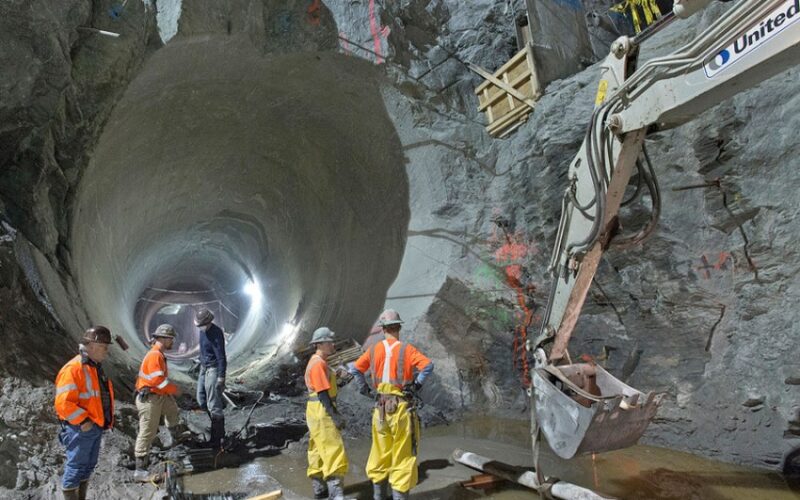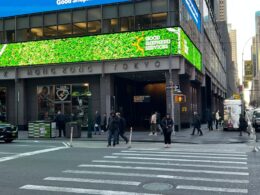New York City needs a transit mayor. Zohran Mamdani’s primary victory and continued support to date has underscored how much New Yorkers care about affordability, namely housing affordability. Housing affordability has understandably taken center stage, but without investments in new transit capacity, it will be difficult to unlock housing development in lower density neighborhoods that are beyond the reach of the subway.
As Election Day approaches, we need to elect a mayor who will champion policies that make using transit faster, easier, and more reliable because that’s how we make housing more affordable. Since at least the 1970s, New York’s mayors and municipal leaders have tended to block or water down policies designed to speed up buses and have been largely silent when it comes to the subway.
This has been a generational mistake. Transit makes it possible to capture the benefits of density — a diversified economy and thriving neighborhoods — while mitigating the bad stuff, namely congestion and its attendant maladies: pollution, car crashes, injuries, fatalities, property damage, noise, road repairs, and more.
Any city that hopes to grow its tax base by adding population and jobs without expanding its physical footprint needs a high-capacity transit system that enables anywhere-to-anywhere connectivity without succumbing to density’s negative attributes.
The problem is that New York is not set up to have a transit mayor. The MTA, the state authority that builds, operates, and maintains the buses and subways is famously run by Albany. The governor and the state Legislature, ultimately, determine the shape, scope, and size of the city’s transit priorities and funding.
As any New Yorker knows, transit is one of the very few services that touches all of our lives on a daily basis regardless of income, race, gender, or religion. And rather than being a contributing factor to the city’s affordability crisis, transit is a big part of the cure because it enables denser land development than a transportation system based solely on automobiles and surface parking.
Despite the governor’s power to shape transit policy, there is much a transit mayor can do. First, he can prioritize policies and spending that improve bus travel speeds. Second, he can make it easier and less expensive to build and extend subways. Third, the mayor can leverage planned transit investments and service improvements to tackle housing affordability through land use changes.
First, buses. Mamdani’s campaign has elevated New York’s transit discourse by centering the beleaguered bus. This is a major win for bus riders who have seen ridership and travel speeds plummet since before the pandemic.
Mamdani’s signature solution is to make them fast and free. Making them fast is the right priority. Making them free, while obviously appealing, will be more expensive than has been initially reported, my own calculations suggest it will be closer to $1.4 billion per year, and, most importantly, does not tackle the largest piece of the affordability crisis, housing.
So what can the mayor do to speed up buses? He, via the New York City Department of Transportation, can implement and champion Local Law 195, the 2019 master streets plan, and begin to dedicate road space to buses so that traffic, double parking, garbage trucks, and unloading at the curb — all challenges created by density — don’t impede the bus’ journey. Policies that speed up the bus and make it more reliable are central to rebuilding transit ridership.
Bus ridership and travel time are closely related. As buses move through the city faster, getting people where they need to go more quickly and reliably, more people will ride the bus. If, however, walking across 42nd St., Church Ave., or Fordham Road is faster than the bus, that means that taxis, private automobiles, and bicycles will also deliver faster travel times. This explains why people who can afford or access an alternative to the bus, opt for faster, more expensive alternatives.
These best practices are not a secret. In fact, Flatbush Ave. in Brooklyn is about to receive an overhaul that implements some of these interventions. NYC DOT routinely designs excellent new bus lanes that mayors and City Council members overrule once concerns about lost street parking rattle their resolve to deliver tangible travel time benefits for bus riders.
A transit mayor will be honest about these tradeoffs, but, ultimately, empower his DOT and side with transit riders because transit makes New York’s density more manageable than space inefficient street parking for cars.
Second, the mayor has the ability to coordinate with the MTA and save the agency hundreds of millions of dollars and time during the construction of new subways. As many have reported, myself included, subway construction in New York City is extremely expensive relative to global peers.
In my own research on the construction of Phase 1 of the Second Ave. subway, I was drawn to local permitting stories that added millions of dollars to the project budget and months and years to the project’s construction timeline. In a city with extremely high labor costs and staffing rates, construction delays interact poorly with costs.
A transit mayor will do everything he can to speed up project delivery and get New Yorkers on to new subways faster. New Yorkers are the primary beneficiaries of new subway construction, so the city should be a committed partner that ensures construction runs smoothly. But can anyone identify something that Mayors Eric Adams or Bill de Blasio did to help build Phase 2 of the Second Ave. Subway quicker or more cost-effectively?
The new mayor should expedite permit reviews at the Department of Transportation to shut down streets, contribute city-owned land — such as underutilized playgrounds or city-owned parking lots — to the project so that MTA contractors can stage construction nearby without going through a costly and slow property acquisition process, and pay for city improvements that piggyback off of the subway construction project rather than trade permits for MTA-funded betterments such as bigger water pipes or extensive road work.
Finally, it’s no surprise that housing construction over the last three decades has concentrated in parts of the Bronx, Brooklyn, Queens, and New Jersey that have access to fast, frequent transit. A quick scan across the East, Harlem, and Hudson rivers reveals distinct skylines that have blossomed in Greenpoint, Williamsburg, Long Island City, Downtown Brooklyn, the South Bronx, and Jersey City. The data backs this up.
According to the state comptroller, between 2010 and 2024 these neighborhoods were among the city’s 10 most active neighborhoods for new housing construction, Williamsburg and Greenpoint added 29,730 units of new housing; Long Island City, Sunnyside, and Woodside added 21,689 new units, Downtown Brooklyn and Fort Greene added 21,516 new units; and Mott Haven, Melrose, Longwood, and Hunts Point added 13,055 new units. The Regional Plan Association reports that Jersey City, between 2010 and 2022, added 26,000 units of new housing.
As New York’s population and job growth have accelerated since the 1980s, new housing has been built in areas within a walk or shuttle ride of the nearest subway stop, as evidenced above.
As the MTA prepares to build the Interborough Express across Brooklyn and Queens, the mayor has a historic opportunity to match the MTA and state’s ambition and vision with a land-use regime that embraces the opportunity presented by the $5 billion to $6 billion infrastructure investment. The new mayor cannot abide the status quo, specifically low-density residential districts that will now have access to multiple train lines and greater access to millions of jobs in Midtown.
City of Yes zoning changes are a great start, but it doesn’t go far enough to justify the state’s investment in IBX. As this linear project spanning 14 miles and 19 stations takes shape, a transit mayor will seek opportunities to push land-use changes that serve the twin purpose of alleviating the housing affordability crunch by creating new housing and commercial opportunities and locating potential subway riders within a short walk of the new stations.
Ultimately, a transit mayor understands that transit is the key to managing the strain created by 8.5 million of residents, 5 million jobs, and 65 million tourists fighting for their sliver of New York.
Goldywn is an assistant professor and program director at the Marron Institute of Urban Management at NYU.








